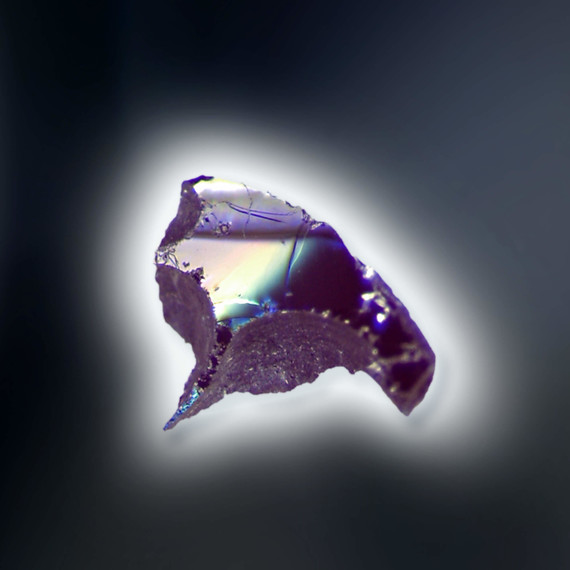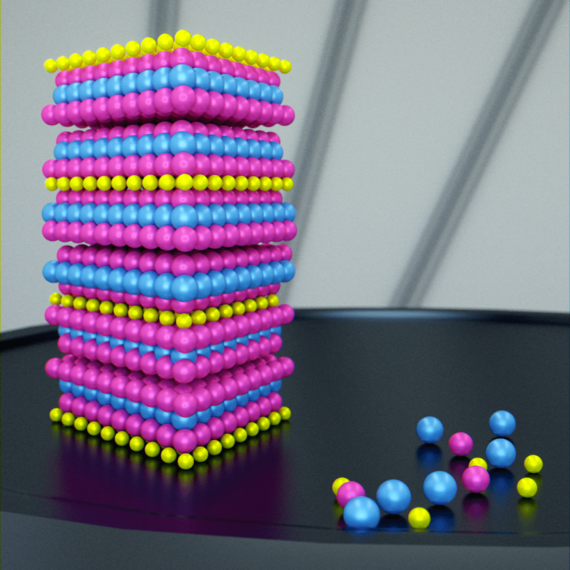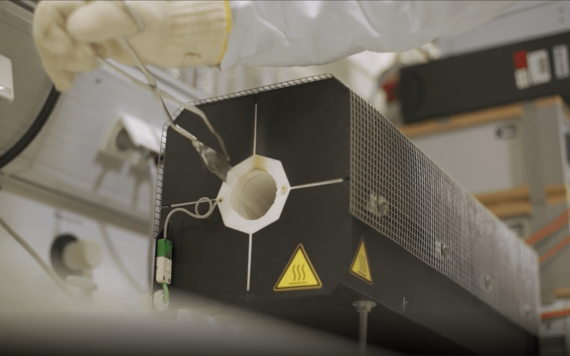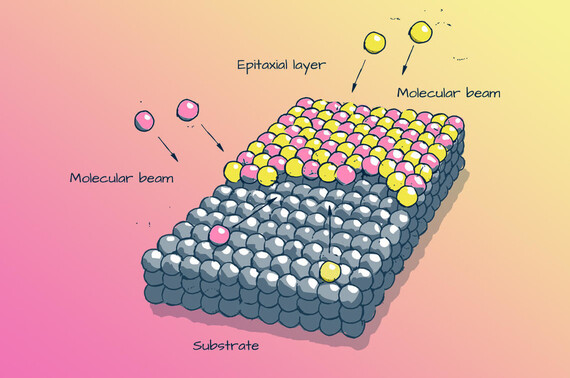Quantenmaterialien
Atom by Atom to New Materials
The researchers of the Cluster of Excellence ct.qmat – Complexity and Topology in Quantum Matter advance to the properties of novel quantum materials that exhibit surprising phenomena under extreme conditions such as ultra-low temperatures, high pressure or strong magnetic fields. They are working to utilize these special properties under everyday conditions.
Junior Professor Anna Isaeva and her team succeeded in producing a completely new type of quantum material in 2019. This promising miracle material no longer needs a strong external magnetic field to conduct electricity without loss. Perhaps it will be used in the future to create building blocks for new quantum technologies. Since its discovery, scientists around the world have been analyzing different facets of this revolutionary material.
Manganese-Bismuth Telluride – A Materials Revolution in the Quantum World
Manganese-bismuth telluride, or MnBi2Te4 for short, is the name of a completely new quantum material whose crystals were tailor-made in Dresden. Its discoverers, among them Dresden Junior Professor Anna Isaeva and Dr. Alexander Zeugner, are working together with a scientific community from 29 nations as part of the Cluster of Excellence ct.qmat.
Manganese-bismuth telluride offers an opportunity for novel electronic components that magnetically encode and transport information. For components that calculate with electron spins – that is, for "spintronics". As a result, for example, information technology is to become more sustainable and energy-saving.


The atom-by-atom tailored crystal manganese-bismuth telluride is a so-called magnetic topological insulator. This material conducts electricity perfectly and thus without loss on its surface while it insulates inside.
In almost detective-like work, the ct.qmat researchers managed to find out how such a crystal with a large, smooth and atomically precise surface can be produced – for this is the only way the crystalline material unfolds its extraordinary properties without the need for a strong external magnetic field: manganese-bismuth telluride brings its own magnetic field along and is therefore much more suitable for practical applications than its predecessors.
The scientists have been searching for a long time for the perfect conditions to produce the quantum material manganese-bismuth telluride. Much like cooks who are looking for a perfect recipe made of raw materials, exact temperature and time. The secret is that manganese telluride and bismuth telluride have to be "prepared" in the laboratory oven at 600 °C for more than 20 days to create the new wonder material.

Molecular Beam Epitaxy – Tailor-Made Materials

Nowadays, researchers produce magnetic topological insulators and other quantum materials in ultra-high vacuum apparatuses, too. The University of Würzburg has one of the largest facilities of this kind in the world. The process is called Molecular Beam Epitaxy (MBE). Materials grow in a controlled manner, atomic layer by atomic layer, and nearly free of impurities. A closed layer, one atom thick, is formed per second. Human hair grows up to ten times faster.
Manganese-bismuth telluride needs at least seven atomic layers to build up its own magnetic field – and is then 0.0000015 mm thick. The advantage of this technology compared to a preparation in a laboratory furnace is that the crystalline material can be built up on any carrier or substrate – for example on quantum chips. Researchers expect this to result in new types of components that will drastically reduce energy consumption, significantly increase storage capacity and enable previously unknown functions.

